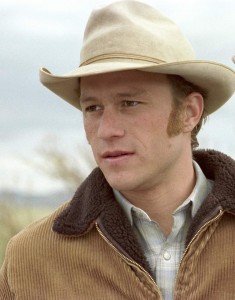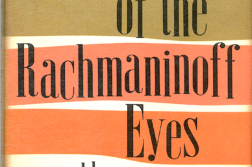ON THE AFTERNOON of January 22, 2008, actor Heath Ledger was found dead in his Manhattan apartment, having taken, it was later learned, an overdose of prescription medications. The Australian native was 28. His masseuse discovered him after being let into his SoHo loft, where she found Ledger face-down and naked in bed. Paramedics were summoned, CPR was administered, but it was too late. Tattooed on his stomach was “Matilda,” the name of his two-year old daughter.
Toxicology reports later revealed that Ledger (suffering from pneumonia at the time) died of acute intoxication after a fatal cocktail of narcotic painkillers, anti-anxiety drugs, and over-the-counter sleep aids. Matilda’s mother, Michelle Williams, whom Ledger had met on the Calgary set of Brokeback Mountain, was filming in Sweden at the time and quickly returned to the States. One of Heath Ledger’s last roles was that of Bob Dylan—one of several Bob Dylans—in last year’s I’m Not There, in which he co-starred for the last  time with Williams. The movie takes its title from an obscure Dylan bootleg, but when Ledger plays Dylan, those three words—“I’m Not There”—take on an eerie meaning for those left to lament his absence. It was Dylan, meanwhile, who sang some forty years ago: “The one was Texas medicine,/ The other was just railroad gin/ An’ like a fool I mixed them/ An’ it strangled up my mind.” In Ledger’s case, it strangled up his heart.
time with Williams. The movie takes its title from an obscure Dylan bootleg, but when Ledger plays Dylan, those three words—“I’m Not There”—take on an eerie meaning for those left to lament his absence. It was Dylan, meanwhile, who sang some forty years ago: “The one was Texas medicine,/ The other was just railroad gin/ An’ like a fool I mixed them/ An’ it strangled up my mind.” In Ledger’s case, it strangled up his heart.
Ledger was named after the brooding antihero of Brontë’s Wuthering Heights, Heathcliff. Heath Ledger possessed what Brontë described as Heathcliff’s “stern” and “deep voice.” The dark coincidences seem to multiply: the latest installment in the “Batman” franchise, in which Ledger plays the role of the Joker, is titled “The Dark Knight,” a haunting echo of Ledger’s first leading movie role as the title character in 2001’s A Knight’s Tale. In taking on the Joker, Ledger decided not to imitate Jack Nicholson’s larger-than-life portrayal in the 1989 version, but to play him (as he told The New York Times, quoted on 2/4/08) as a “psychopathic, mass-murdering, schizophrenic clown with zero empathy.” Nicholson’s shoes would have been impossibly large to fill, so Ledger wisely opted to play Batman’s nemesis in a more tragic fashion. The role proved to be a demanding one, however, and along with The Imaginarium of Doctor Parnassus, which he was filming in London just days before his death, it took a toll on the actor’s peace of mind.
The tabloids were quick to point out that the separation from Williams, coupled with the Joker’s demands, had ravaged Ledger’s nerves, disturbed his sleep cycles, and intensified his chemical dependencies. But there may also have been a death wish underlying Ledger’s pharmaceutical demise. Asked about Matilda and fatherhood in November of 2007, the actor said: “I feel good about dying now because I feel like I’m alive in her. But at the same time, you don’t want to die because you want to be around for the rest of her life” (US Weekly, 2/11/08). The sentiment is certainly a strange one, as is Ledger’s detached switch from the confessional first-person (“I feel good’) to the impersonal second (“you don’t want to die”). But the confusion of voices here speaks to something Ledger, who had no formal training in acting, had been plagued by throughout his career: while he had no apparent trouble disappearing into characters, he had a great deal of difficulty getting out of them.
In an article in the Times (1/27/08) on the Sunday following Ledger’s death, “When Icons Die Young,” Jenny Lyn Bader argued that the loss of “someone cut down in the prime of their life brings home our own mortality,” so that “maybe our rendering them immortal is our way of not facing that inevitabi- lity.” Still, the cultural practice of turning the prematurely dead into godlike icons is a curious—and cumulative—one: the ever-expanding pantheon already includes Marilyn Monroe (dead at 36), Jim Morrison (28), Kurt Cobain (27), James Dean (24), and even such long-dead literary sensations as Percy Bysshe Shelley (29) and John Keats (25). This list is hardly complete. Does it also embrace such lesser-known figures as Elliott Smith (34), River Phoenix (23), and Jeff Buckley (who drowned at 31 after wading into the Mississippi River wearing steel-tipped boots)? Each of these doomed beauties came to represent something more: a face frozen in time, a youth who never grew up, the symbol of the artist whose art is both a blessing and a burden. As David Lipsky wrote in his elegy for Rolling Stone (2/21/08), “Ledger’s death feels wrong. It means youth and vitality aren’t enough.”
Accompanying the Times article was a black-and-white photograph of Ledger smoking a cigarette juxtaposed with a photograph of—who else?—James Dean, the patron saint of the doomed American beauty. A third picture was not a photo but a painting of Thomas Chatterton, the 18th-century poet who killed himself at seventeen in anguish over his lack of money and recognition. Wordsworth, who lived to be eighty, immortalized the doomed poet in 1807 in “Resolution and Independence”: “Chatterton, the marvelous Boy,/ The sleepless Soul that perished in its pride.” There is a slight echo of this in the death notice posted by Heath’s father, Kim Ledger, in the West Australian on January 26th, calling his son “my beautiful boy, so loving, so talented, so independent, so caring, so young … no more chess games mate … this is it, couldn’t beat you anyway! We were one, in soul and commitment, Just Father and Son. I will love you forever Dad.”
It was Heath Ledger’s daring turn as Ennis Del Mar in Brokeback Mountain that earned him an Academy Award nomination in 2005 for Best Actor. The role also secured Ledger —and co-star Jake Gyllenhaal—two spots in American queer iconography. First, Gyllenhaal is actually Matilda Rose Ledger’s godfather and was reportedly devastated by the news of Heath’s death. And Ledger brought a Brando-like intensity to his portrayal of Ennis, a Wyoming cowboy who never quite comes to terms with his sexuality. Throughout the film, he struggles with a kind of bottled rage, an inwardly focused aggression that keeps his eyes constantly averted from the people around him. As Jack Twist, Gyllenhaal attempts in scene after scene to make eye contact with Ledger but gets only a far-off look from those hardened brown eyes. It’s the look of a man incapable of coping with the realities of living in a painfully repressed state.
In early February, Heath Ledger was laid to rest next to his grandparents in a family plot in Perth, Australia.
Colin Carman is a graduate student in English at UC-Santa Barbara.




